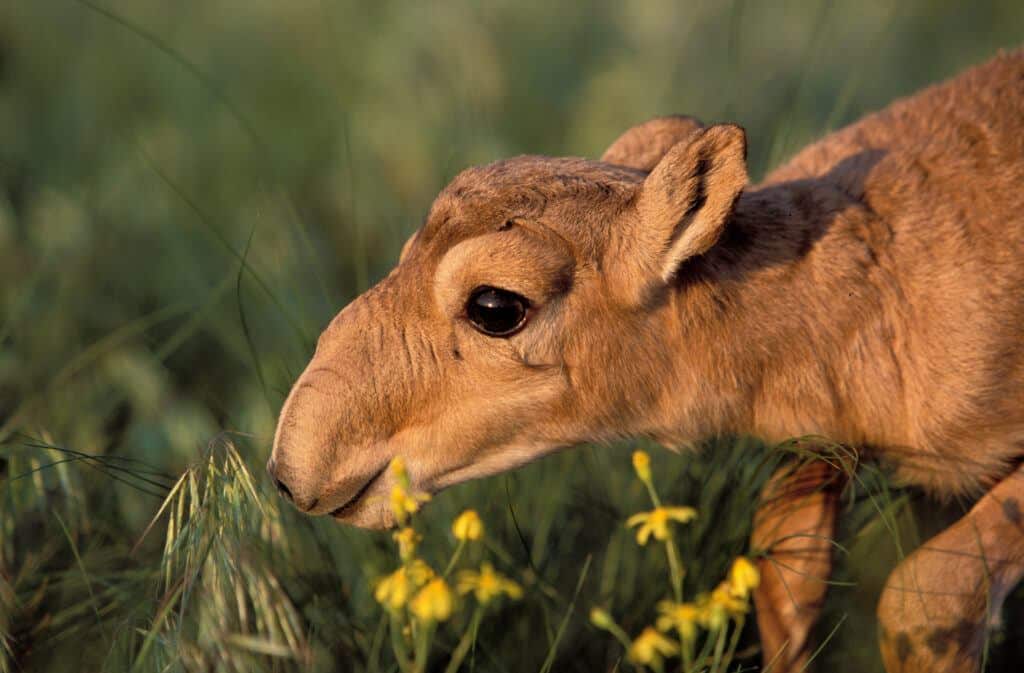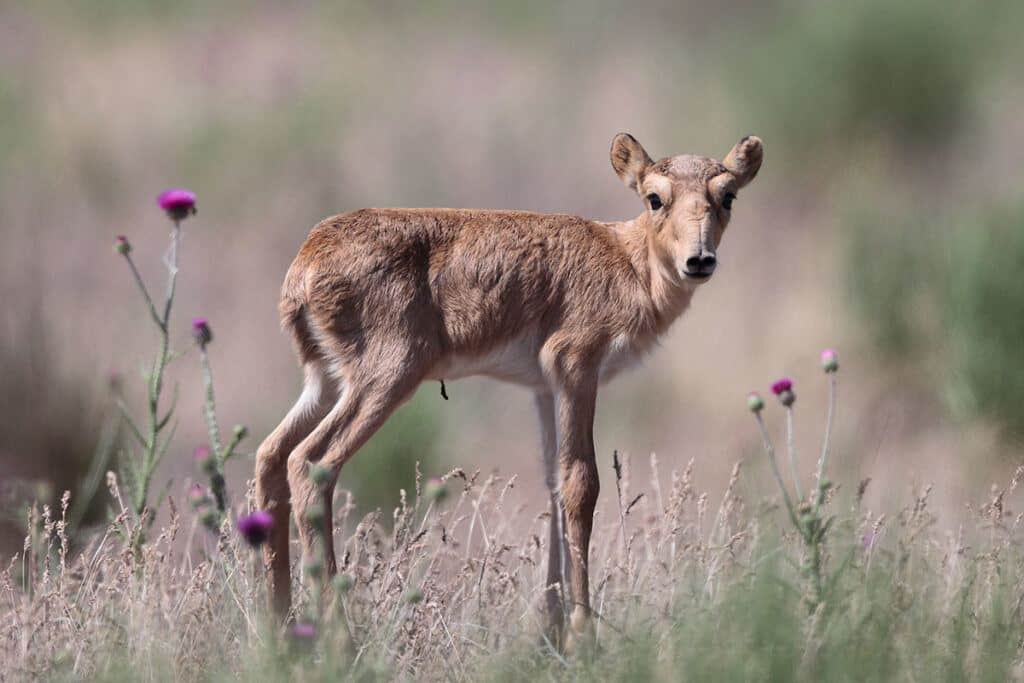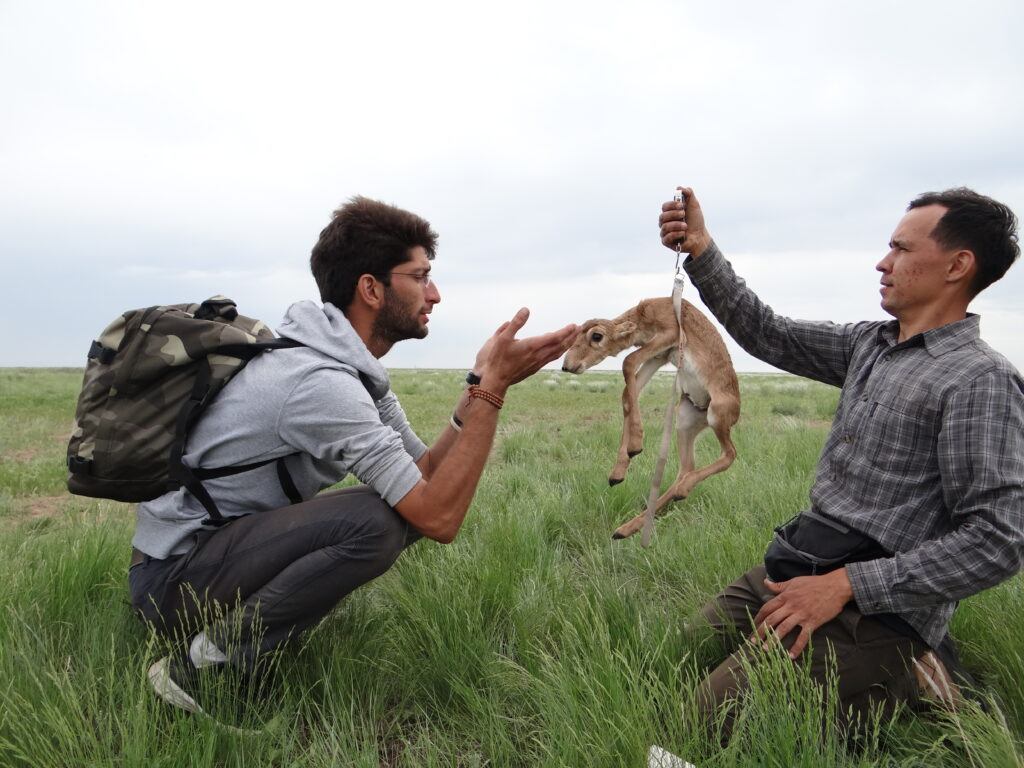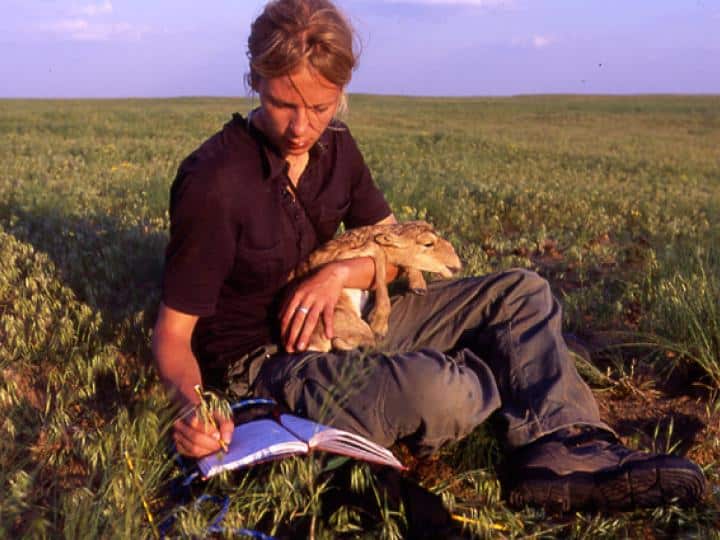The winds howl in chorus across the arid plains of Central and East Asia, unimpeded by forests or mountains. Ground once peppered with the hoof prints of countless saiga antelope has increasingly grown bare as saiga have inched closer to extinction. Yet, in addition to their tubular noses, saiga are renowned for being survivors, and their latest breeding season brought long absent good fortune to this belabored species. Researchers discovered 530 saiga calves tucked beneath the tall grasses of Kazakhstan’s Ustyurt Plateau, a miraculous number of newborns found in just a single aggregation. In neighboring Mongolia, the saiga population also bloomed to over 8,450 individuals, up from 3,800 in 2018. This tremendous growth is a sign that the efforts of the Saiga Conservation Alliance (SCA) and other regional conservationists are working.
SCA posits that even more newborns went undiscovered, theorizing that over 100,000 calves were born in Kazakhstan last year. While these numbers are encouraging, conservationists caution that many of these saiga will not survive to adulthood. In both Kazakhstan and Mongolia, saiga antelope have been beset by poachers since the 1980s. Male saiga are targeted for their horns, for which there is high demand in traditional Asian medicines, leading to a shortage of breeding pairs. Severe winters, drought, and infectious disease outbreaks have also devastated their numbers, and human infrastructure projects have led to habitat loss and migration disruption.
To address these threats, SCA maintains close ties with a network that gives saiga a fighting chance at survival. One of their main partners, the Association for the Conservation of Biodiversity in Kazakhstan (ACBK), focuses on researching saiga migration and restoring saiga habitat. Since 2011, SCA has participated in initiatives with ACBK and the Kazakh government, leading to designated habitat corridors and protected areas, ranger patrols, and monitoring programs. SCA also provides financial support to ACBK for children’s activities and annual celebrations, like Saiga Day, that promote saiga conservation and share best practices with programs throughout saiga range countries. These combined efforts are contributing to recovery, with the last five years of surveys noting an increase in all three saiga populations in Kazakhstan.
SCA also extends administrative coordination and community support to WWF-Mongolia, who manage most saiga conservation fieldwork in that country. WWF-Mongolia’s rangers conduct anti-poaching patrols twice a month and regularly monitor herds, which is necessary considering Mongolia’s saiga have been saved from extinction twice in the last 30 years—once from disease and again from harsh winter. The climate conditions of recent years have been favorable in Mongolia, allowing conservationists’ saiga recovery strategies to bear fruit.
This recent saiga baby boom is a hopeful sign, but to ensure saiga populations continue to grow, sustainable rangeland management and ongoing anti-poaching measures are needed. New saiga herds also need to form in these regions, so that a single natural disaster cannot wipe out an entire population. By expanding protected areas and policies, SCA and its partners will help these survivors continue to thrive, once again decorating Asia’s plains with countless hoof prints.





